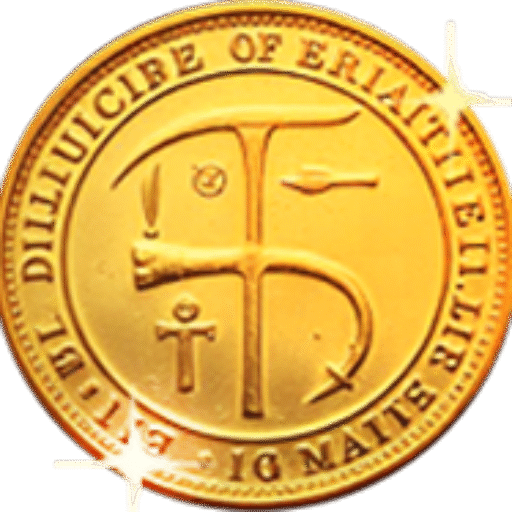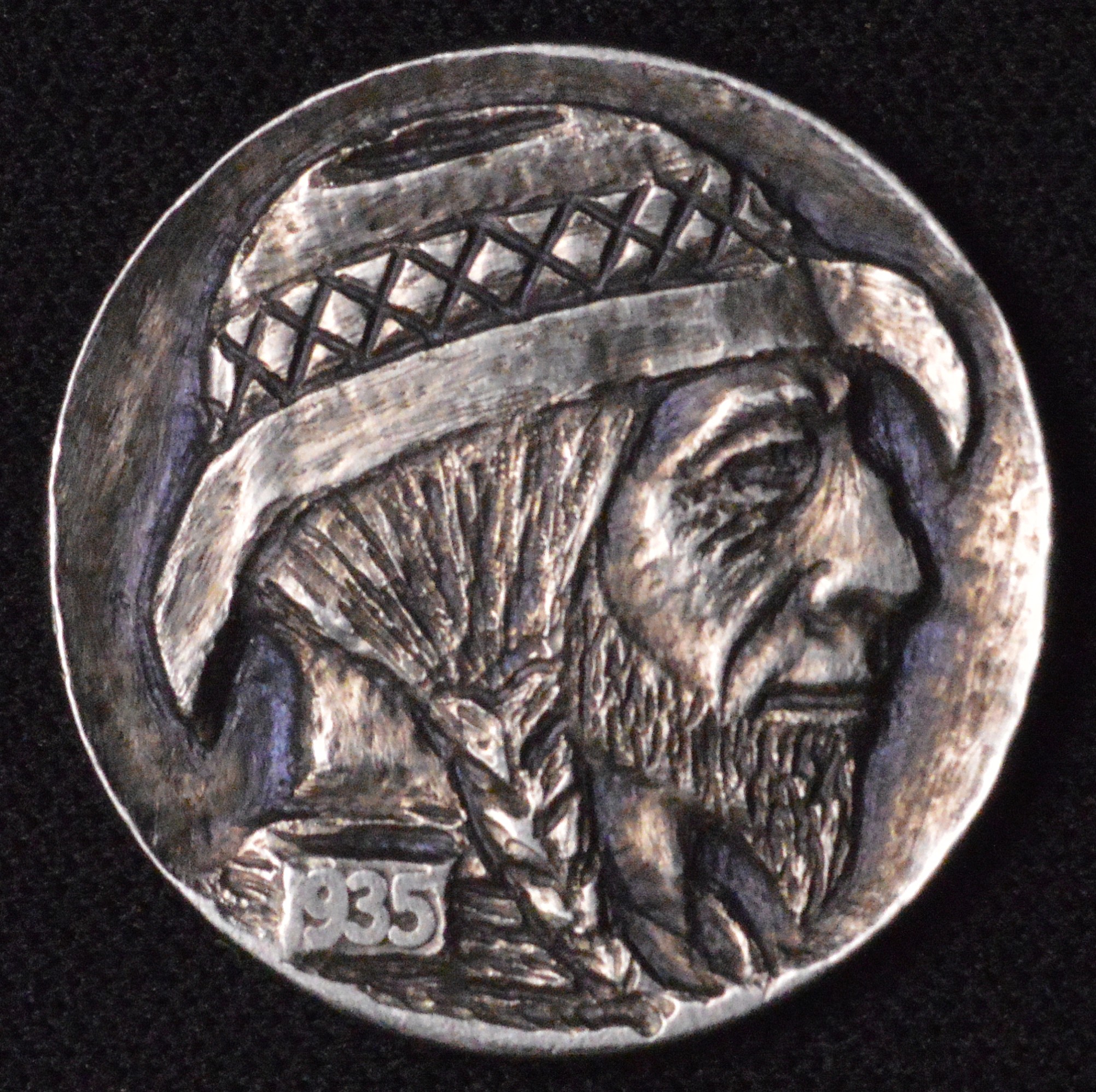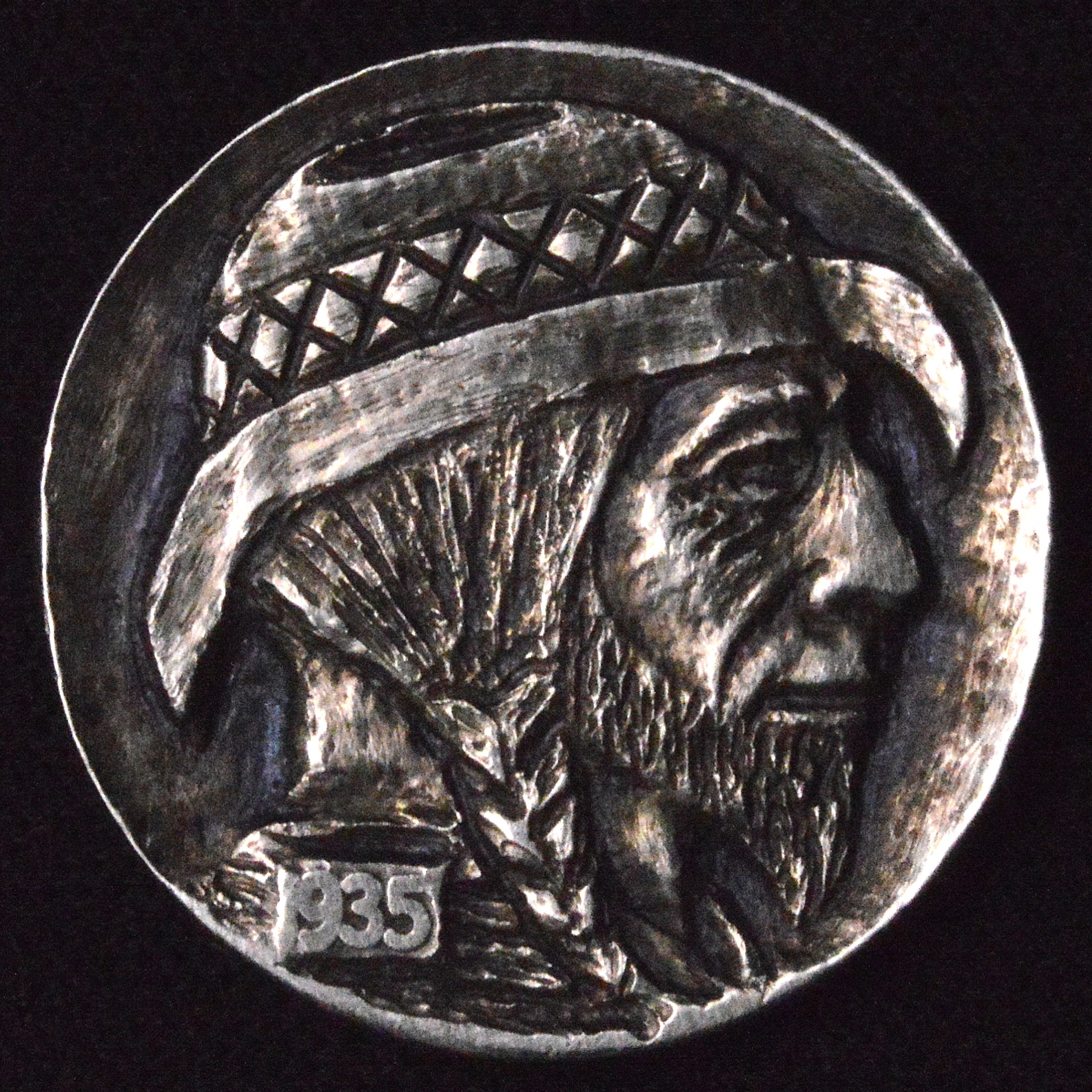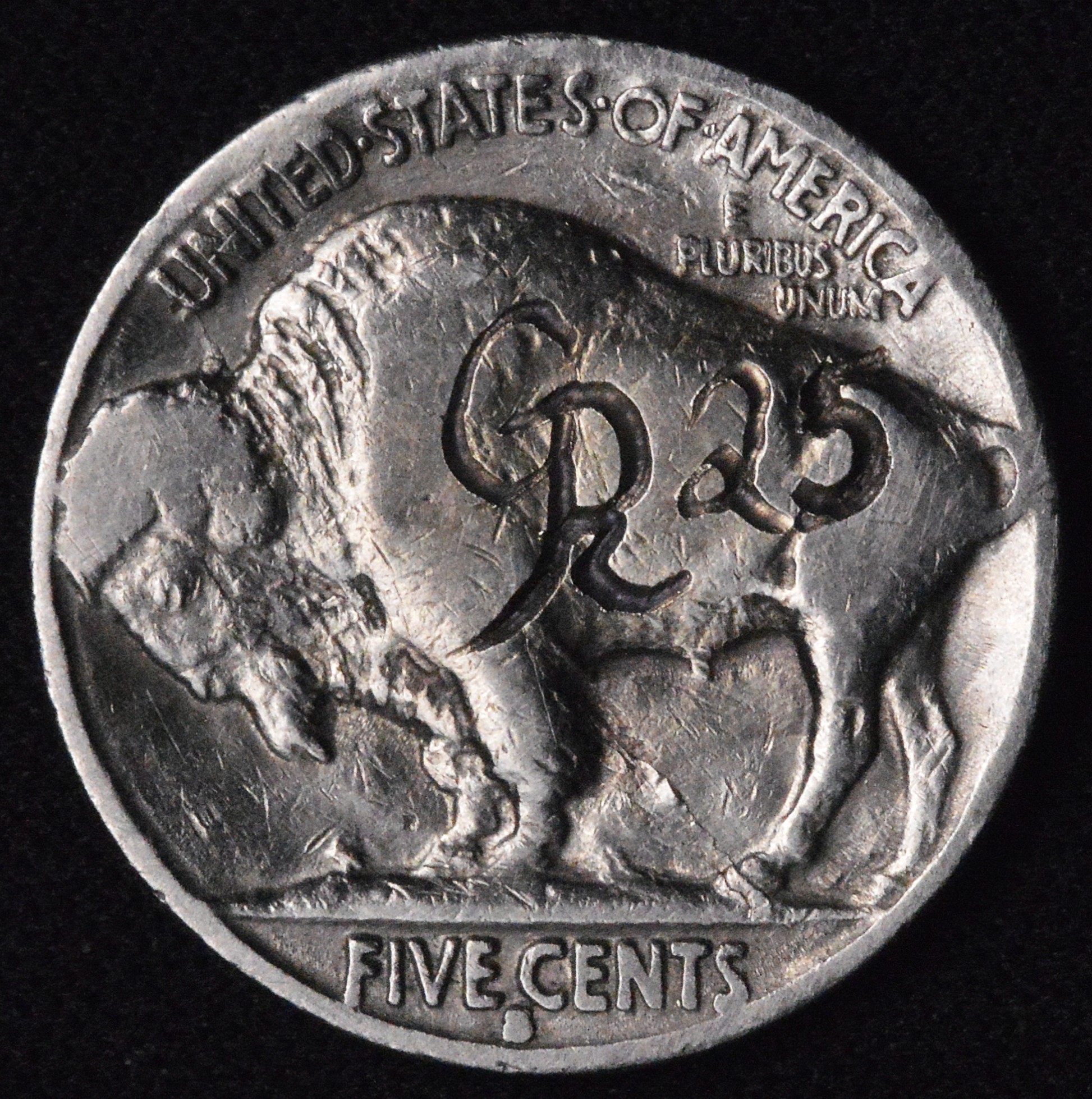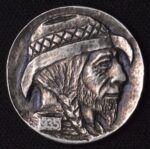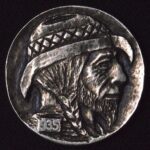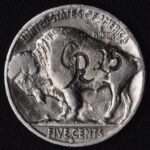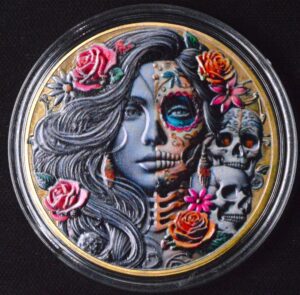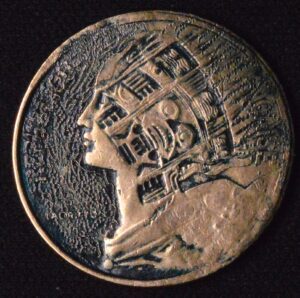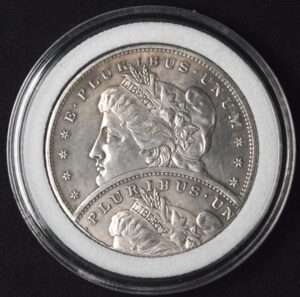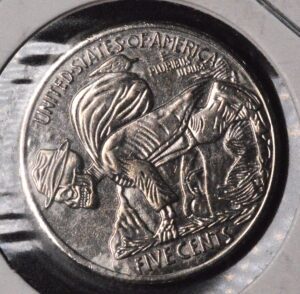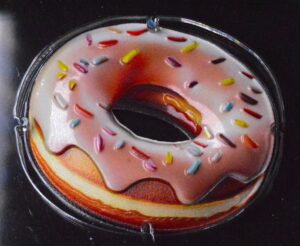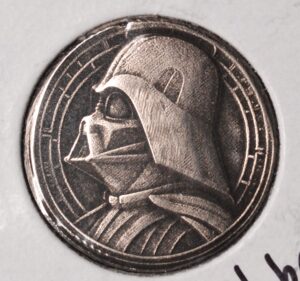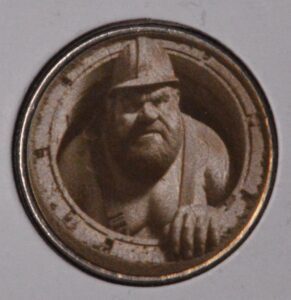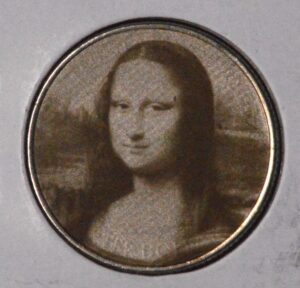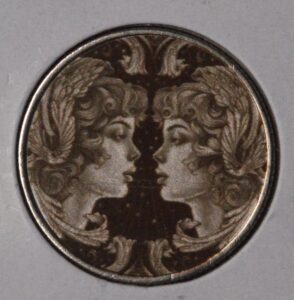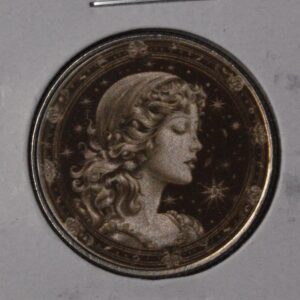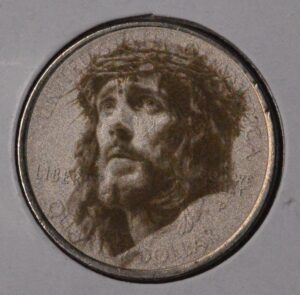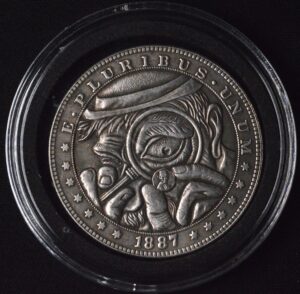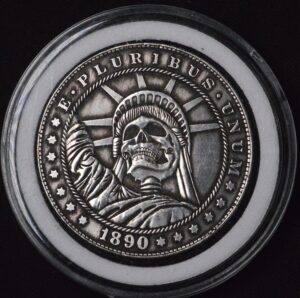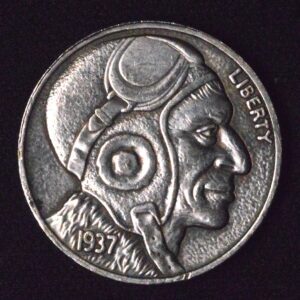Description
A “Wild Bill” hand-carved hobo nickel is a contemporary example of the classic American folk art tradition that began in the early 20th century with the introduction of the Buffalo nickel (1913–1938). Hobo nickels are coins that have been artistically engraved by hand, transforming the original designs—typically the Native American portrait or the bison—into detailed miniature carvings featuring characters, faces, or scenes.
The early hobo artists were often itinerant workers or “hobos” who traveled across the United States in search of work during the Great Depression. They used simple tools such as penknives, nails, or small chisels to create unique works of art that they often traded for food or lodging. Two of the most famous original artists, Bert Wiegand and Bo Hughes, influenced generations of engravers by elevating the hobo nickel from improvised carving to a true artform.
Modern carvers like “Wild Bill” continue this legacy, blending traditional hobo nickel craftsmanship with modern engraving tools and creative subjects. His pieces frequently combine classic carving depth with expressive facial details, hats, or modern motifs while maintaining the rugged authenticity associated with Depression-era originals. Each carving begins as a standard Buffalo nickel, chosen for its high relief, copper-nickel composition (75% copper, 25% nickel), and soft surface—ideal for detailed engraving work.
What distinguishes a Wild Bill carving is the precision and lifelike personality of the subject—whether depicting a cowboy, outlaw, skeleton, or whimsical portrait. Such coins demonstrate both technical mastery and respect for historical continuity. Today, these modern hobo nickels are considered collectible one-of-a-kind artworks, directly tied to an enduring American artistic tradition that merges survival, storytelling, and metalcraft.
A “Wild Bill” hand-carved hobo nickel is a contemporary example of the classic American folk art tradition that began in the early 20th century with the introduction of the Buffalo nickel (1913–1938). Hobo nickels are coins that have been artistically engraved by hand, transforming the original designs—typically the Native American portrait or the bison—into detailed miniature carvings featuring characters, faces, or scenes.
The early hobo artists were often itinerant workers or “hobos” who traveled across the United States in search of work during the Great Depression. They used simple tools such as penknives, nails, or small chisels to create unique works of art that they often traded for food or lodging. Two of the most famous original artists, Bert Wiegand and Bo Hughes, influenced generations of engravers by elevating the hobo nickel from improvised carving to a true artform.
Modern carvers like “Wild Bill” continue this legacy, blending traditional hobo nickel craftsmanship with modern engraving tools and creative subjects. His pieces frequently combine classic carving depth with expressive facial details, hats, or modern motifs while maintaining the rugged authenticity associated with Depression-era originals. Each carving begins as a standard Buffalo nickel, chosen for its high relief, copper-nickel composition (75% copper, 25% nickel), and soft surface—ideal for detailed engraving work.
What distinguishes a Wild Bill carving is the precision and lifelike personality of the subject—whether depicting a cowboy, outlaw, skeleton, or whimsical portrait. Such coins demonstrate both technical mastery and respect for historical continuity. Today, these modern hobo nickels are considered collectible one-of-a-kind artworks, directly tied to an enduring American artistic tradition that merges survival, storytelling, and metalcraft.
A “Wild Bill” hand-carved hobo nickel is a contemporary example of the classic American folk art tradition that began in the early 20th century with the introduction of the Buffalo nickel (1913–1938). Hobo nickels are coins that have been artistically engraved by hand, transforming the original designs—typically the Native American portrait or the bison—into detailed miniature carvings featuring characters, faces, or scenes.
The early hobo artists were often itinerant workers or “hobos” who traveled across the United States in search of work during the Great Depression. They used simple tools such as penknives, nails, or small chisels to create unique works of art that they often traded for food or lodging. Two of the most famous original artists, Bert Wiegand and Bo Hughes, influenced generations of engravers by elevating the hobo nickel from improvised carving to a true artform.
Modern carvers like “Wild Bill” continue this legacy, blending traditional hobo nickel craftsmanship with modern engraving tools and creative subjects. His pieces frequently combine classic carving depth with expressive facial details, hats, or modern motifs while maintaining the rugged authenticity associated with Depression-era originals. Each carving begins as a standard Buffalo nickel, chosen for its high relief, copper-nickel composition (75% copper, 25% nickel), and soft surface—ideal for detailed engraving work.
What distinguishes a Wild Bill carving is the precision and lifelike personality of the subject—whether depicting a cowboy, outlaw, skeleton, or whimsical portrait. Such coins demonstrate both technical mastery and respect for historical continuity. Today, these modern hobo nickels are considered collectible one-of-a-kind artworks, directly tied to an enduring American artistic tradition that merges survival, storytelling, and metalcraft.
CUSTOMER FEEDBACK








Related Products & Newly Released!




SHIPPING POLICY
Your order is shipped from the United States with USPS tracking within one business day.
14 Day Return Policy
You can return your item back within
14 days of the purchase

Secure payments
Your payments are 100% secure and are processed through Square or PayPal on a protected security network.
SHIPPING POLICY
FREE International and Domestic (United States) shipping. Your order is shipped with USPS tracking 24 hours after you order.
14 Day Return Policy
You can return your item back within
14 days of the purchase

Secure payments
Your payments are 100% secure and are processed through Square or PayPal on a protected security network.
RESOURCES
support
Get Fresh Articles!
Sign up now to receive our articles for the latest insights and promotions!
RESOURCES
support
Get Fresh Articles!
Signup our newsletter to get update insight or promotions.

